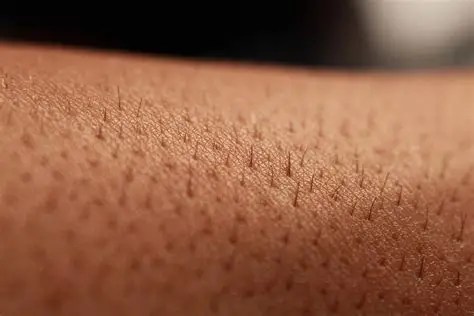The Science and Benefits of Skin Barrier Film

The skin is the body’s largest organ, serving as the first line of defense against environmental stressors, infections, and injuries. Yet, despite its resilience, skin is also vulnerable to damage from friction, moisture, adhesives, and chronic conditions. This is why innovations like skin barrier film have become essential in modern healthcare and daily wellness. Designed to protect sensitive areas and maintain the skin’s natural integrity, these products highlight how small interventions can make a big difference in comfort, healing, and quality of life.
Understanding the Skin Barrier
The skin barrier is a complex structure made up of lipids, proteins, and cells that form a protective shield. It prevents water loss while blocking harmful substances such as bacteria, allergens, and pollutants. When this barrier is intact, the skin appears smooth, hydrated, and healthy. However, when it is compromised, problems such as irritation, infection, or chronic wounds can develop. Maintaining a strong skin barrier is therefore essential for both everyday health and the management of medical conditions.
What Is a Skin Barrier Film?
A skin barrier film is a protective coating applied to the skin’s surface, typically in the form of a spray, wipe, or liquid that dries into a thin, transparent layer. It acts as a shield between the skin and external irritants. In medical care, barrier films are commonly used for patients with stomas, chronic wounds, or frequent dressing changes, as they prevent adhesives or bodily fluids from damaging delicate skin. Outside of clinical settings, similar products are used in skincare to protect against irritation from cosmetics, friction, or environmental exposure.
Medical Uses of Skin Barrier Film
One of the most significant applications of barrier film is in ostomy care. Patients who use colostomy or ileostomy bags often experience skin irritation around the stoma due to constant adhesive use and exposure to moisture. Applying a barrier film forms a protective layer that reduces friction, improves comfort, and prevents painful breakdown.
In wound care, barrier films are applied to the skin surrounding an injury to protect against adhesives used in bandages and dressings. This ensures that when dressings are changed, the underlying skin remains intact. They are also valuable in preventing pressure injuries in patients who are bedridden or wheelchair-bound, as the film reduces the impact of friction and moisture.
Everyday Uses in Skincare
While originally developed for medical use, barrier films are increasingly recognized in general skincare. Athletes may apply them to reduce chafing from sports equipment or repetitive movement. Individuals with sensitive skin may use them as a protective layer under cosmetics, preventing irritation from harsh ingredients. Parents sometimes apply them to children’s skin in areas prone to diaper rash, creating a gentle barrier that reduces discomfort.
The versatility of these films lies in their ability to act invisibly—once applied, they form a breathable layer that does not interfere with movement or appearance. This makes them a discreet yet powerful tool for maintaining skin health.
The Science Behind Barrier Protection
The effectiveness of a skin barrier film comes from its formulation. These products are typically made of polymers that create a flexible, breathable coating. Unlike ointments or creams, which may rub off easily, barrier films adhere closely to the skin and resist breakdown from moisture or friction.
The breathable nature of the film is particularly important. It allows oxygen to reach the skin while preventing excessive water loss, ensuring that healing can occur naturally. At the same time, the film’s flexibility means that it moves with the body rather than cracking or peeling under stress.
The Role in Preventing Complications
Skin breakdown can lead to serious complications, including infection, delayed healing, and chronic wounds. For patients with medical conditions, these risks are heightened, and even minor irritation can escalate quickly. Barrier films serve as a preventive tool, reducing the likelihood of complications before they occur.
For example, in hospitals, barrier films are routinely used on patients at risk of pressure ulcers. By creating a smooth surface that minimizes friction between skin and bedding, the films help prevent sores from developing. Similarly, cancer patients undergoing radiation therapy may use barrier films to protect fragile skin from additional irritation.
Integrating Barrier Films into Daily Routines
For those managing medical conditions, barrier films are often recommended by healthcare providers as part of a comprehensive care plan. They are simple to apply, dry quickly, and are compatible with most adhesives and dressings. Patients learn to use them as part of their self-care, gaining independence while also protecting their health.
In everyday life, barrier films can be incorporated into skincare routines as a proactive step. For individuals prone to eczema or dermatitis, applying a barrier film before exposure to potential irritants—such as cleaning chemicals or heavy cosmetics—can prevent flare-ups. For athletes, using a film before a long run or workout can reduce discomfort and skin damage caused by friction.
Myths and Misconceptions
Despite their benefits, some misconceptions exist about skin barrier films. One common belief is that they “suffocate” the skin, preventing it from breathing. In reality, high-quality films are designed to be breathable, allowing gas exchange while still blocking harmful irritants. Another misconception is that barrier films are only for people with serious medical conditions. In truth, anyone can benefit from their protective qualities, whether dealing with sensitive skin, frequent irritation, or simply wanting to prevent discomfort.
The Future of Skin Protection
As technology in skincare continues to advance, barrier films are likely to become even more sophisticated. Researchers are exploring formulations that not only protect but also deliver healing agents, such as anti-inflammatory compounds or moisturizers. These next-generation films could combine protection with active treatment, making them even more valuable in both medical and everyday contexts.
In addition, the growing awareness of skin health in the beauty and wellness industry means that barrier films are likely to appear in consumer skincare lines. Just as sunscreen became a standard tool for skin protection, barrier films may soon be viewed as a daily necessity for maintaining resilience against environmental stress.
Conclusion
The skin plays a vital role in overall health, and protecting it is essential for both comfort and longevity. Innovations such as skin barrier film demonstrate how even small, invisible tools can have a powerful impact. From preventing medical complications to reducing everyday irritation, these products embody the modern approach to healthcare—simple, effective, and adaptable to individual needs.
By reinforcing the body’s natural defenses, barrier films ensure that skin remains strong in the face of challenges. They remind us that healthcare is not just about treating illness but about preventing harm, supporting resilience, and enhancing quality of life. Whether used in hospitals, homes, or personal routines, skin barrier films are a testament to the power of innovation in protecting the body’s most essential shield.




